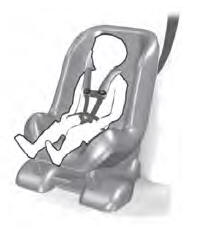Lincoln Aviator 2020-2025 Service Manual / Powertrain / Engine / Starting System - 3.0L EcoBoost / General Procedures - Starter Motor Drive Gear and Flywheel Ring Gear Inspection
Lincoln Aviator: Starting System - 3.0L EcoBoost / General Procedures - Starter Motor Drive Gear and Flywheel Ring Gear Inspection
Inspection
-
Remove the starter motor.
Refer to: Starter Motor (303-06A Starting System - 3.0L EcoBoost, Removal and Installation).
-
Check the wear patterns on the starter motor drive gear
and the flywheel or flexplate ring gear. If the wear pattern is normal,
then install the starter motor.
Refer to: Starter Motor (303-06A Starting System - 3.0L EcoBoost, Removal and Installation).
.jpg) |
-
If the starter motor drive gear and the flywheel or
flexplate ring gear are not fully engaging and the starter motor drive
gear is scored or damaged, then install a new starter motor.
Refer to: Starter Motor (303-06A Starting System - 3.0L EcoBoost, Removal and Installation).
-
If the teeth on the flywheel or flexplate ring gear are
scored or damaged, then install a new flywheel or flexplate.
Refer to: Flexplate (303-01A Engine - 3.0L EcoBoost, Removal and Installation).
 Diagnosis and Testing - Starting System - 3.0L EcoBoost
Diagnosis and Testing - Starting System - 3.0L EcoBoost
Diagnostic Trouble Code (DTC) Chart
Diagnostics in this manual assume a certain skill level and knowledge of Ford-specific diagnostic practices.REFER to: Diagnostic Methods (100-00 General Information, Description and Operation)...
 Removal and Installation - Starter Motor
Removal and Installation - Starter Motor
Removal
WARNING:
Always disconnect the battery ground cable at the battery
before disconnecting the starter motor battery terminal lead. If a tool
is shorted at the starter motor battery terminal, the tool can quickly
heat enough to cause a skin burn...
Other information:
Lincoln Aviator 2020-2025 Service Manual: Removal and Installation - Rear Door
Removal NOTE: Removal steps in this procedure may contain installation details. NOTE: LH side shown, RH side similar. Open the door. Remove the check arm bolt. Torque: 18 lb.ft (25 Nm) Disconnect the rear door electrical connector...
Lincoln Aviator 2020-2025 Service Manual: Removal and Installation - High Voltage Low Current Fuse - Plug-In Hybrid Electric Vehicle (PHEV)
Removal WARNING: To prevent the risk of high-voltage shock, always follow precisely all warnings and service instructions, including instructions to depower the system. The high-voltage system utilizes approximately 450 volts DC, provided through high-voltage cables to its components and modules...
Categories
- Manuals Home
- Lincoln Aviator Owners Manual
- Lincoln Aviator Service Manual
- Tire Change Procedure
- Garage Door Opener
- Interior Lamps
- New on site
- Most important about car
Child Seats

Use a child restraint (sometimes called an infant carrier, convertible seat, or toddler seat) for infants, toddlers and children weighing 40 lb (18 kg) or less (generally four-years-old or younger).
Using Lap and Shoulder Belts
WARNING: Do not place a rearward facing child restraint in front of an active airbag. Failure to follow this instruction could result in personal injury or death.
Copyright © 2025 www.liaviator2.com
